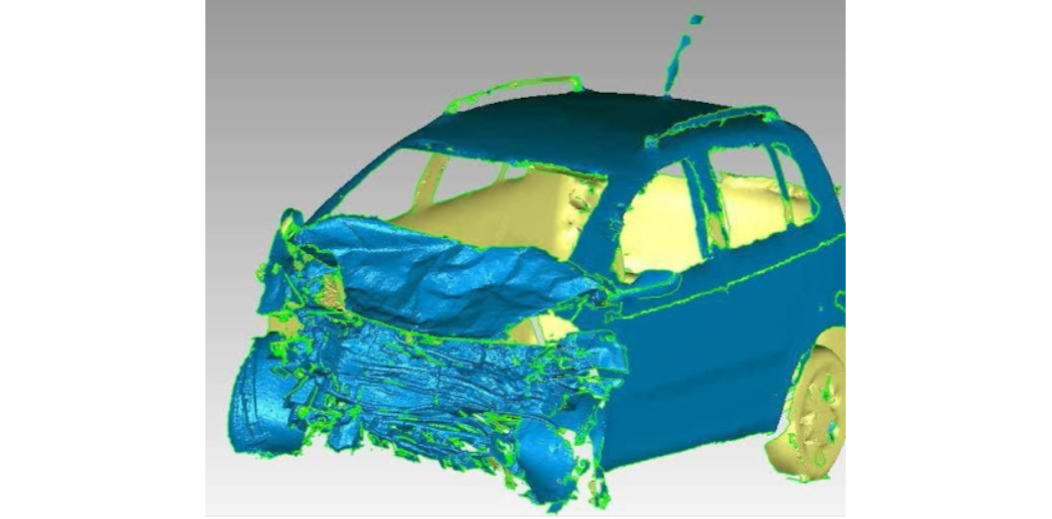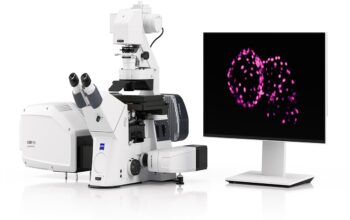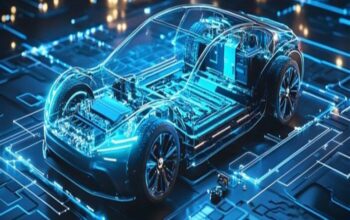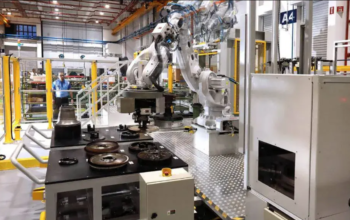This content was originally written and published by FARO.
Crime fiction fans would probably find these statements familiar: “There is only one truth! But prior to obtaining all available clues, any assumptions would be undesirable as it impairs judgment.”
While these phrases may have been lifted off pages of fictitious stories, there is — in real life — a group of people whose professions require them to live by these principles. Combining their expertise with advanced technologies, these individuals conduct analysis to unravel the truth behind complex police cases that are shrouded in mystery, helping to cast light on the true cause of a road traffic accident, for example, to give the victims and their families closure. And the emergence of 3D scanning technology has enabled these professionals to record all possible details of a scene, adding a powerful weapon to their arsenal of tools.
Professional Knowledge Meets New Technology
Established in 2005, the Center of Forensic Science at Southern Medical University in China is a state-approved, large-scale forensic science institution set up by the
Guangdong Province Department of Justice. The center’s Research Institute of Forensic Science Technologies for Traffic Accidents has been using 3D scanning technology in the investigation of traffic accidents and has established itself as the country’s leading authority through its continuous extensive exploration of the subject matter.
Leading the research institute is Deputy Director Professor Zhao Weidong, who has had training and experience across multiple disciplines, including medical biomechanics, electronic circuits, computing, and image processing. He first started employing 3D scanning technology to analyze traffic accidents back in 2011, and that led to the Center’s earliest purchase of a FARO large-volume laser scanner in 2012. Since then, Prof Zhao and his team have gone on to achieve great success in several highly challenging and disputed cases. The FARO 3D laser scanner became an indispensable tool for Prof Zhao’s team and was frequently deployed at accident scenes across the country.
Benefits of the FARO 3D Laser Scanner
The team at the Center of Forensic Science handles cases from across the country, and many cases to-date that have sought their expertise were incidents that took place outside of Guangdong. This meant that Prof Zhao’s team had to travel on location for the surveys to be completed. Due to the team’s busy schedule, each trip was compressed into only a day or two, and this further accentuated the advantages that the team enjoyed with the FARO 3D laser scanner.
First, the device’s portability made it very easy for team members to bring it along on trips, as the laser scanner conveniently fits into a suitcase or backpack. Its fast scanning speed of 976,000 points per second enables the team to generate 3D point cloud data of the surrounding environment with an accuracy of up to millimeter level in just mere minutes. With the FARO 3D laser scanner, the team became much more efficient at performing on-site surveys, but more importantly, they were now able to fully record all relevant physical and environmental information. This prevents a situation whereby useful information is inadvertently omitted, which would have meant more time, manpower, and monetary resources spent on revisiting the site.
In the past, before the team started using the FARO 3D laser scanner, site surveys usually involved the use of tape measures, photographic records, and evidence markers. This traditional method was time-consuming, labor-intensive, and prone to error — and such errors had in the past grossly misled investigators in their case analysis. However, the greater problem with this method was that
investigators working the case documentation may have unwittingly omitted useful information, confounding any subsequent analysis.
3D Scanning Solutions’ Strength in Traffic Accident Investigations
Prof Zhao firmly believes that 3D scanning solutions provide investigators with favorable working conditions when approaching case analysis and evidence presentation.
For one, high-precision 3D point cloud data allows investigators to virtually reconstruct the scene, offering them the ability, while seated in the office, to ‘walk through’ how an incident happened. Using the software, analytics can also intuitively mark out traces and collision points, as well as to conduct trajectory analysis, thereby reconstructing the accident process to the full extent. The level of detail at which the analysis goes to often surprises those involved in the accident.
In a case that Prof Zhao’s team helped to solve, 3D scanning technology played a pivotal role in providing crucial missing pieces of information. The collision was between a motorcycle and a freight tractor, and all statements pointed to the motorcyclist as the main party responsible. While the police had some doubts, it seemed like witness statements were consistent, and there was no video evidence or neutral third-party witnesses to call on. However, through the high- fidelity reconstruction of the accident scene, the team presented their deduction based on rigorous simulations. At this, the situation reversed itself entirely.
“When I gave a blow-by-blow account of the accident process to the relevant authorities, as deduced through our scanned data analysis, the driver of the freight tractor was stunned by the accuracy of our account and confessed to his crime at once,” Prof Zhao related, expressing his relief at how injustice was avoided. Apart from the level of detail it captures, 3D scanning technology also provides investigators with visually compelling evidence in the form of animation and illustration. When combined with a sophisticated deduction process, the analysis results and testimony is much stronger, and it substantially increases the likelihood of a statement being accepted in court.
Commenting on his expectations of 3D scanning technology usage in forensic investigations, Prof Zhao beamed,
As it turns out, forensic investigators are typically involved when a case is considered ‘complicated’, or when it has long remained unsolved. When Prof Zhao’s team is called in, it is common for them to be working on accidents that took place up to 12 months before. By that time, they would only have second-hand information based on data recorded by the traffic police, including photographs, site maps, and tape measurement data. Key pieces of information would often be missing, or they would have to deal with inaccurate data. In fact, as there is time pressure to clear accident scenes, the importance of obtaining detailed first-hand information is much greater in road traffic accident cases than in criminal cases.
Below is another example of a disputable, challenging case that Prof Zhao’s team handled.
FARO Restores Justice for Innocent Family
The accident occurred at 5:00 am along a two-way single carriageway, resulting in tragic losses for two families. Party A lost his wife in the incident, while the other party
lost his life and also his two children, leaving only his wife, Survivor B, in a coma for a year. At the scene of the accident, Survivor B’s car ended up on the wrong side of the road, facing oncoming traffic, while Party A’s car remained in its lane. The traffic police determined that Survivor B’s husband, who was driving at the time, should bear full responsibility for the accident.
However, when Survivor B woke from her vegetative state, she firmly asserted that it was Party A that crossed over into their lane and drove against the traffic. For her, setting the record straight was to prove her husband’s innocence, but it would also free her of the responsibility toward a huge compensation of CNY 2 million. As there was insufficient evidence, the court had to turn to professional forensic science for assistance. In the absence of any video record, coupled with a lack of witnesses and the fact that the accident occurred nearly a year ago, the odds were stacked against Survivor B. Prof Zhao finally took on the case after receiving multiple inquiries and requests for help.
“Prof Zhao and his assistant used the FARO laser scanner to obtain scan data of the vehicles involved, as well as the section of the road where the accident occurred. Both vehicles had been badly damaged, so there was added difficulty in the analysis of this case. The 3D point cloud data-enabled Prof Zhao to obtain accurate measurements and perform a precise deformation analysis on a computer. The relative positions of the two vehicles at the end of the collision was then obtained by matching the corresponding traces on the cars. Using the software, Prof Zhao found the positions of the two vehicles prior to the collision by pulling them apart. With this, the positional changes between the two cars (prior and after collision) were reconstructed. By substituting the trace data on the ground, Prof Zhao placed both vehicles in their relative positions. Taking the collision point as the center, and calculating with an equation, he deduced that the intersection angle for the collision was 16 degrees. Combining that with the driving speed, Prof Zhao concluded that Party A’s vehicle was traveling in Survivor B’s lane for at least 40 meters.
At this, Party A admitted that Prof Zhao’s deduction was indeed the truth of what happened. The loss of his wife and the prospect of having to look after a young 2-year- old son with tight finances had made him conceal the truth all this while. Fortunately, the combination of advanced technology and professional knowledge ensured that truth and justice prevailed.
About the Center of Forensic Science, Southern Medical University
Established in 2005, the Center of Forensic Science at Southern Medical University in China is a state-approved, large-scale forensic science institution set up by the Guangdong Province Department of Justice. Affiliated to the university, the Center is built with collective efforts of talent from the Department of Forensic Medicine of Southern Medical University, Public Health Testing Center, Guangdong Provincial Key Laboratory of Medical Biomechanics, and more. The Center comprises 8 appraisal categories, namely, forensic pathology, forensic clinical science, forensic evidence, forensic toxicology, traffic accident trace appraisal, trace evidence appraisal, image data, and electronic data. As an independent third-party appraisal center, it also carries out independent forensic business services for the community.
To know more, please check Faro.









